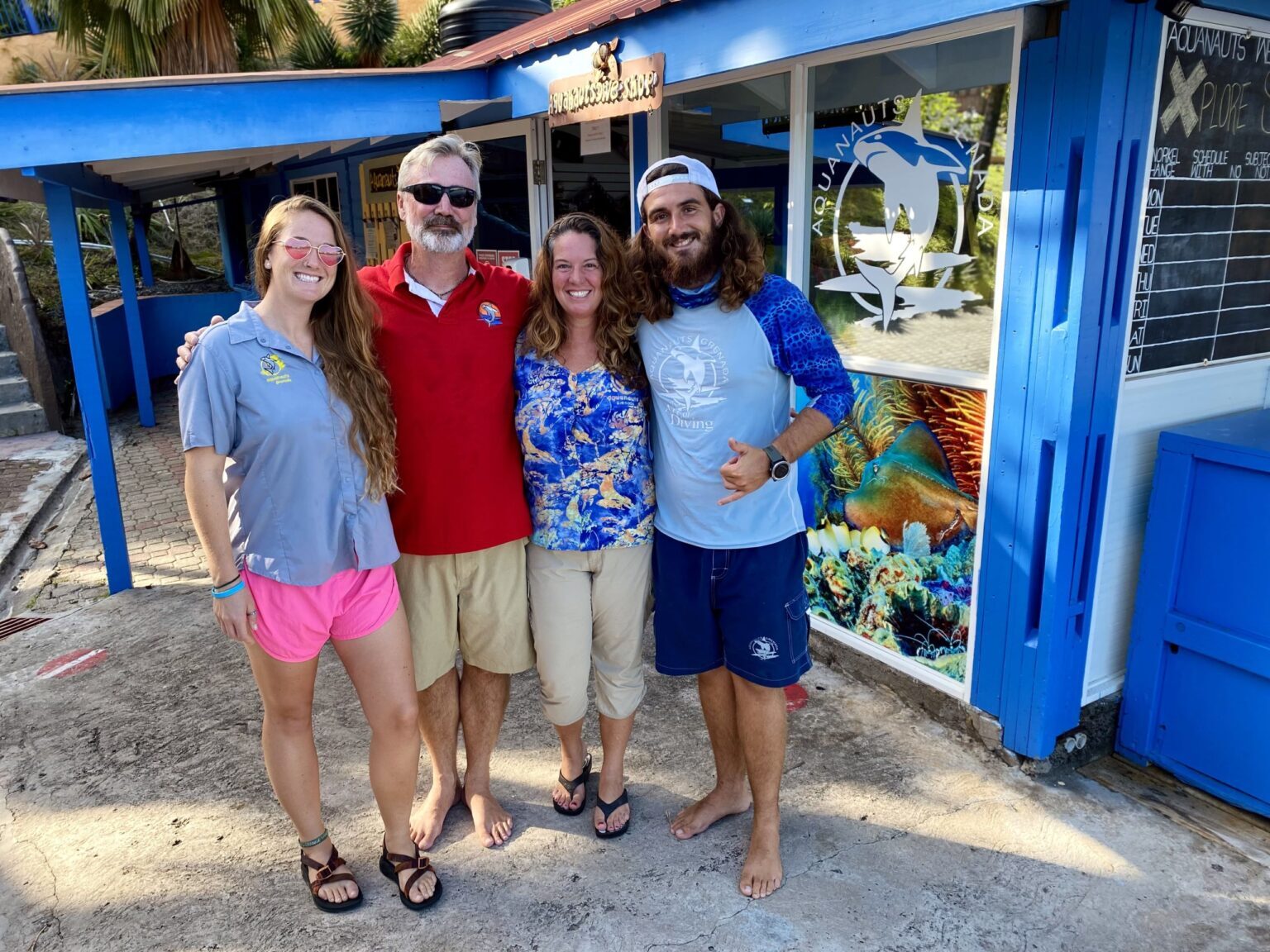Empire State Development Announces Nearly $5 Million Awarded To Six Workforce Development Projects – Empire State Development (ESD) (.gov)

New York State Workforce Development Grants Advance Sustainable Development Goals
Executive Summary
Empire State Development (ESD) has announced the allocation of nearly $5 million in grants through the Office of Strategic Workforce Development (OSWD). This funding supports six distinct projects across the Finger Lakes, Long Island, New York City, and Western New York regions. The initiative is designed to provide training for over 700 individuals in collaboration with more than 40 employer partners, focusing on high-demand sectors such as construction and advanced manufacturing. The program’s structure, which includes comprehensive wraparound services, directly contributes to several United Nations Sustainable Development Goals (SDGs), particularly those concerning poverty reduction, quality education, decent work, reduced inequalities, and sustainable communities.
Grant Allocation and Impact
The grants awarded in Round 8 utilize a Pay for Performance model, ensuring funding is directed toward programs with demonstrable outcomes. The total investment by the OSWD to date exceeds $65 million, benefiting over 15,000 New Yorkers. The recent awards target specific regional needs while embedding principles of sustainable and equitable development.
Round 8 Grant Recipients and SDG Alignment
-
Rochester Educational Opportunity Center – Finger Lakes ($1.61 million)
This project establishes an entry-level Building Trades program. By providing holistic case management, including stipends and access to housing and childcare, the initiative directly addresses barriers to employment.
- SDG 1 (No Poverty): Provides financial stipends and support services to alleviate economic hardship during training.
- SDG 8 (Decent Work and Economic Growth): Trains individuals for in-demand construction jobs, fostering economic growth.
- SDG 11 (Sustainable Cities and Communities): Directly supports the Inner Loop North redevelopment project, aiming to reconnect urban neighborhoods and foster community development.
-
St. Nicks Alliance – New York City ($1 million)
Funding supports Green Trades programs with pathways in building maintenance, HVAC, and construction. The curriculum intentionally integrates sustainability and energy efficiency to address climate justice and lower carbon emissions.
- SDG 7 (Affordable and Clean Energy): Training in green trades promotes energy efficiency and sustainable practices.
- SDG 8 (Decent Work and Economic Growth): Creates pathways to green economy jobs for low-income residents.
- SDG 11 (Sustainable Cities and Communities): Focuses on lowering carbon emissions and enhancing urban environmental sustainability.
- SDG 10 (Reduced Inequalities): Targets low-income Brooklyn residents, providing them with skills for upward mobility.
-
New York City Department of Small Business Services – New York City ($691,239)
This grant implements a direct-entry pre-apprenticeship program for the building and construction trades, featuring the North America’s Building Trades Unions’ Multi-Craft Core Curriculum.
- SDG 4 (Quality Education): Delivers a standardized, industry-recognized curriculum to ensure high-quality vocational training.
- SDG 8 (Decent Work and Economic Growth): Provides a direct pathway to apprenticeships and stable careers in the construction sector.
- SDG 1 (No Poverty): Offers stipends, transportation, and food assistance to remove financial barriers for participants.
-
Rochester Institute of Technology – Finger Lakes ($718,662)
In partnership with the Veterans Outreach Center (VOC), RIT will provide credentialed training in electronics assembly, rework, and repair for veterans.
- SDG 4 (Quality Education): Offers specialized, credentialed training in a high-tech field.
- SDG 10 (Reduced Inequalities): Specifically targets veterans, a group facing unique challenges, to facilitate their entry into high-paying technical jobs.
- SDG 8 (Decent Work and Economic Growth): Connects a skilled talent pool with the needs of the advanced manufacturing industry.
-
Plumbing Contractors Association of Long Island – Long Island ($354,050)
This project develops a plumbing pre-apprenticeship program that includes training in green plumbing technologies, focusing on recruiting recent high school graduates.
- SDG 4 (Quality Education): Creates a structured pre-apprenticeship pathway for young people entering the trades.
- SDG 6 (Clean Water and Sanitation): Enhances skills related to water supply, drainage, and waste systems.
- SDG 11 (Sustainable Cities and Communities): Incorporates training on green technologies to support sustainable infrastructure.
-
Sheet Metal Contractors and Local 71 Joint Apprenticeship Training Committee – Western New York ($277,927)
Funding will support the construction and operation of a new Computer Aided Design (CAD) lab to upgrade apprentice skills and meet contractor demand.
- SDG 9 (Industry, Innovation, and Infrastructure): Invests in modern technological skills (CAD) to enhance the competitiveness and capacity of the local industry.
- SDG 4 (Quality Education): Upgrades training facilities to provide relevant, in-demand technical skills.
- SDG 8 (Decent Work and Economic Growth): Addresses a stated skills gap, enabling contractors to bid on more projects and increasing job security for apprentices.
Strategic Framework and Future Opportunities
Programmatic Alignment with Global Goals
The Office of Strategic Workforce Development, established in 2022, operates with a clear mandate to support industry-driven programs that prepare New Yorkers for living-wage jobs. The Pay for Performance Operating Grant and the Workforce Development Capital Grant programs are the primary instruments for achieving this mission. By funding curriculum development, capital improvements, and essential wraparound services, the OSWD framework inherently supports a broad range of SDGs. This strategy ensures that economic development is inclusive, equitable, and sustainable, creating a resilient workforce prepared for the 21st-century economy.
Continuation of Initiative: Round 9
Coinciding with this announcement, ESD has opened applications for Round 9 of the OSWD grant funding. The application period is open through Friday, October 17. This continuation signals an ongoing commitment by New York State to invest in its human capital as a cornerstone of its economic development strategy, reinforcing its dedication to achieving the Sustainable Development Goals.
1. Which SDGs are addressed or connected to the issues highlighted in the article?
SDG 4: Quality Education
- The article focuses on providing workforce development and training programs. These initiatives are designed to equip New Yorkers with relevant technical and vocational skills, which directly aligns with the goal of ensuring inclusive and equitable quality education and promoting lifelong learning opportunities. Projects like the Rochester Educational Opportunity Center’s Building Trades program and the Plumbing Contractors Association’s pre-apprenticeship program are clear examples of vocational training.
SDG 8: Decent Work and Economic Growth
- The core purpose of the grants is to foster economic growth by creating a skilled workforce for high-demand industries like construction and advanced manufacturing. The article states the program supports “employer-driven programs that are creating new opportunities for more New Yorkers to participate and succeed in the 21st century economy,” directly contributing to productive employment and decent work.
SDG 10: Reduced Inequalities
- The programs specifically target and provide support for vulnerable and marginalized groups to reduce economic inequalities. For instance, the St. Nicks Alliance program is for “low-income Brooklyn residents,” and the Rochester Institute of Technology program is designed to aid “veterans in gaining access to high-paying technical jobs.” The provision of wraparound services like childcare, transportation, and housing assistance further aims to remove barriers to employment for these groups.
SDG 11: Sustainable Cities and Communities
- Several projects mentioned contribute to making cities and human settlements inclusive, safe, resilient, and sustainable. The St. Nicks Green Trades program explicitly focuses on “addressing climate justice and lowering carbon emissions, with intentional elements of sustainability and energy efficiency.” Additionally, the Rochester project supports the “Inner Loop North development project,” which aims to “reconnect Downtown Rochester with other neighborhoods and foster opportunities for further economic and community development.”
SDG 17: Partnerships for the Goals
- The entire initiative is built on a partnership model. The article highlights the “collaboration between training providers and more than 40 employer partners,” facilitated by a state government agency (Empire State Development). This public-private partnership is essential for aligning training with industry needs and ensuring job placement, embodying the spirit of strengthening the means of implementation.
2. What specific targets under those SDGs can be identified based on the article’s content?
Target 4.4: Increase the number of youth and adults with relevant skills for employment
- The article details multiple programs aimed at providing “credentialed training” in technical and vocational fields such as construction, plumbing, HVAC, and electronics assembly. The stated goal of training “more than 700 New Yorkers” through these grants directly addresses the objective of substantially increasing the number of adults with skills for employment and decent jobs.
Target 8.6: Substantially reduce the proportion of youth not in employment, education or training
- The program by the Plumbing Contractors Association of Long Island specifically “focuses on recruiting high school students or recent graduates directly into jobs with member contractors.” This directly targets youth to ensure they transition from education into employment, thereby reducing the proportion of youth not in employment, education, or training (NEET).
Target 10.2: Empower and promote the social and economic inclusion of all
- The grants are awarded to programs that actively promote the economic inclusion of specific groups. The article mentions training for “low-income Brooklyn residents” and veterans. By providing skills and wraparound services like childcare and transportation assistance, these programs empower and facilitate the entry of these individuals into the workforce, promoting their social and economic inclusion.
Target 11.1: Ensure access to adequate, safe and affordable housing and basic services
- The Rochester Educational Opportunity Center’s project supports the “Inner Loop North development project,” a community development initiative. Furthermore, the St. Nicks Green Trades program, with its focus on building maintenance and energy efficiency, contributes to improving urban infrastructure and services, which is a key component of this target.
Target 17.17: Encourage and promote effective public, public-private and civil society partnerships
- The model described in the article is a clear example of this target in action. New York State’s Office of Strategic Workforce Development (a public entity) provides grants that fund collaborations between “training providers” (civil society/non-profits) and “more than 40 employer partners” (private sector). This multi-stakeholder partnership is designed to achieve a common workforce development goal.
3. Are there any indicators mentioned or implied in the article that can be used to measure progress towards the identified targets?
- Number of people trained: The article explicitly states that the grants will “support the training of more than 700 New Yorkers” and that “over 15,000 New Yorkers” have been supported to date. This is a direct quantitative indicator of progress towards Target 4.4.
- Amount of public investment in vocational training: The article mentions that “nearly $5 million has been awarded” in the current round and “more than $65 million has been awarded” in total. This serves as an indicator of the financial resources being mobilized for workforce development.
- Number of individuals from vulnerable groups trained: The article implies this indicator by highlighting programs for “low-income Brooklyn residents” and “veterans.” Tracking the number of participants from these specific demographics would measure progress towards Target 10.2.
- Job placement and retention rates: The use of “Pay for Performance Operating Grant[s]” and the mention of supporting “job retention once training is completed” imply that job placement and retention are key performance metrics. These rates are crucial indicators for measuring the success of decent work initiatives under SDG 8.
- Number of public-private partnerships formed: The article states the initiative involves “collaboration between training providers and more than 40 employer partners,” facilitated by a state agency. The number of such partnerships is a direct indicator for Target 17.17.
4. Create a table with three columns titled ‘SDGs, Targets and Indicators” to present the findings from analyzing the article.
| SDGs | Targets | Indicators |
|---|---|---|
| SDG 4: Quality Education | Target 4.4: By 2030, substantially increase the number of youth and adults who have relevant skills, including technical and vocational skills, for employment, decent jobs and entrepreneurship. | Number of people receiving credentialed vocational training (e.g., “more than 700 New Yorkers”). |
| SDG 8: Decent Work and Economic Growth | Target 8.6: By 2030, substantially reduce the proportion of youth not in employment, education or training. | Number of youth/recent high school graduates recruited into pre-apprenticeship and job programs; Job placement and retention rates (implied by “Pay for Performance” model). |
| SDG 10: Reduced Inequalities | Target 10.2: By 2030, empower and promote the social, economic and political inclusion of all, irrespective of… economic or other status. | Number of individuals from specific groups (e.g., “low-income Brooklyn residents,” “veterans”) trained and placed in jobs. |
| SDG 11: Sustainable Cities and Communities | Target 11.1: By 2030, ensure access for all to adequate, safe and affordable housing and basic services and upgrade slums. | Number of people trained in “Green Trades” focusing on sustainability and energy efficiency; Support for community development projects (e.g., “Inner Loop North development project”). |
| SDG 17: Partnerships for the Goals | Target 17.17: Encourage and promote effective public, public-private and civil society partnerships. | Number of partnerships established between public entities (ESD), training providers, and private employers (e.g., “more than 40 employer partners”). |
Source: esd.ny.gov

What is Your Reaction?
 Like
0
Like
0
 Dislike
0
Dislike
0
 Love
0
Love
0
 Funny
0
Funny
0
 Angry
0
Angry
0
 Sad
0
Sad
0
 Wow
0
Wow
0



























;Resize=805#)


















































